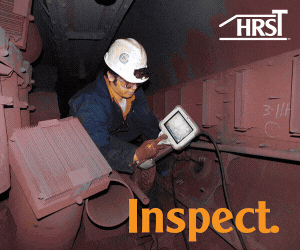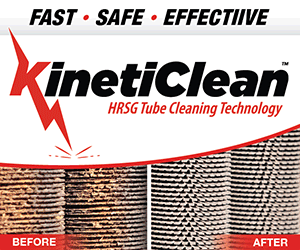To address trim erosion on HP-bypass pressure control valves (PCV), HRSG Forum’s Bob Anderson (see previous article) put together a panel of experts—including Ory Selzer, IMI/CCI; Justin Goodwin, Fisher Valve; Vasileios Kalos, GE Gas Power; and Consultant Joe Schroeder. The erosion occurs when high-pressure steam entrains water droplets (not to be confused with saturated steam) and passes through the valve trim at high velocities “like sandpaper.” The damage can be so severe that some users thought their trim had melted!
Once the trim has eroded, the valve will leak steam and overheat the downstream carbon steel piping.
The bad news is that you can’t buy a valve that avoids this problem. All models are susceptible. Using better trim materials, reducing velocities by increasing the seat diameter by 10 to 15 mm, and/or lengthening the control plug, may buy you some time and keep the valve tighter for a longer period, but that’s about it.
The root cause of the problem lies in details of the HP-bypass piping design and the peculiarities of starting up a multiple-GT/single-steam-turbine combined cycle. The lag cold-start unit (the second GT to start up) on a 2 × 1 design usually is the culprit. Because the HP isolation valve for the common manifold of the main-steam header is closed, something that does not happen for the lead cold-start unit occurs. Reason is that there is no flow path for steam to warm and dry the HP steam pipe between the HPSH outlet and the isolation valve prior to opening the HP-bypass PCV.
Once the PCV begins to leak enough to overheat the downstream piping, the only safe action is to operate with the PCV at its minimum-open position until the valve can be repaired. Opening the desuperheater-water injection valves to cool the piping—with the PCV closed—is, by consensus, “definitely a bad idea,” Get the details by listening to the panel discussion below.
Interest in the subject was revealed through the extensive questions delivered ahead of the meeting. One attendee asked if there is another source for the erosion—such as magnetite. Panelists answered that magnetite would pass through all the valves and this erosion is heavily biased towards the HP-bypass PCV. One panelist noted he’d only seen one valve that had experienced solid-particle erosion rather than water-induced erosion.
Another asked about chromium or tungsten carbide materials for the trim instead of Stellite-6, and the response was they weren’t used in steam applications. “Promising alternative trim materials have not seen many operating hours,” one panelist noted, including a temporary repair technique using Inconel 625 or 718 or superalloys with high titanium or aluminum content as a “buttering layer.”
Anderson suggested that establishing a proper steam flow path to warm the piping from the superheater outlet to the common manifold isolation valve prior to opening the PCF is needed to avoid condensate ingestion. This may require enlarging the drain upstream of the isolation valve. Pre-warming the valve body and steam line with warm-up nipples has shown inconsistent experience. One panelist made the wry comment that “spray valves leak and drain valves plug.” So, to will HP-bypass PCV valve trim erode and leak—at least until further notice.





